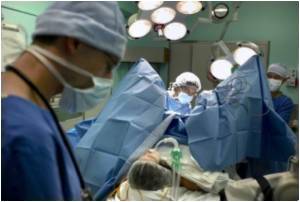
‘Very young, healthy children undergoing short surgical procedures requiring a single exposure to general anesthesia did not exhibit any effect on the cognitive outcomes tested.’
Tweet it Now
The multi-center PANDA (Pediatric Anesthesia Neurodevelopment Assessment) study was led by researchers at Columbia University Medical Center and New-York-Presbyterian/Morgan Stanley Children's Hospital. SmartTots was a partial funder of the study, which was published in the Journal of the American Medical Association. The study, which compared 105 otherwise healthy children who were given general anesthesia for inguinal hernia surgery before the age of three with siblings who had not received anesthesia before age three, showed no significant difference in IQ scores between the siblings when assessed between the ages of eight and 15.
While this study included healthy children with a single exposure to general anesthesia, a different patient population, including children with a more complicated medical history and with multiple general anesthesia exposures, may show different results.
The siblings in the PANDA study were also tested for a host of secondary outcomes, including memory, learning, attention, language and behavior. Researchers found no statistically significant differences in these categories after accounting for gender differences, with the exception that exposed children had more instances of abnormal 'internalizing behavior', which refers to problems such as anxiety and social withdrawal.
"We're encouraged by these results," said Beverley Orser, professor of anesthesiology at the University of Toronto and a member of SmartTots' Steering Committee and Scientific Advisory Board. "The PANDA study was well designed, and supports the conclusion that healthy young children undergoing a single, short-duration exposure to general anesthesia may not be at risk. Unlike some of the previous epidemiological studies, the PANDA study was able to account for variables such as surgery, medical condition, and length of exposure, which is extremely important."
Advertisement
"The PANDA study findings are encouraging news for parents," said Santhanam Suresh, professor of anesthesiology and pediatrics at Northwestern University, co-chair of the SmartTots Steering Committee, and a pediatric anesthesiologist at Lurie Children's Hospital in Chicago. "The duration of exposure for most of the children enrolled in the PANDA and GAS studies was less than an hour and a half, which is about average for most children undergoing general anesthesia, but many children undergo anesthesia for longer periods or receive multiple exposures. We need more research to determine their level of risk."
Advertisement
Orser cited several scenarios, also named in the study, that need further investigation. These include repeated exposures to general anesthesia and those of longer duration, and the use of general anesthesia on sick or otherwise vulnerable children. Also, there may be issues affecting only females that were not detected in this study, since the overwhelming majority of inguinal hernia surgery patients - and the patients in the PANDA study - are male (95 out of 105 in the study).
"The PANDA results are heartening and not surprising, particularly in light of other studies we have seen," said Alex S Evers, head of the Department of Anesthesiology at Washington University in St. Louis, co-chair of SmartTots' Scientific Advisory Board and a member of the SmartTots Steering Committee. "The animal studies that have shown problems mostly involved higher doses and longer exposures to anesthesia. I think we can reassure parents that a single, short duration exposure of general anesthesia is safe for their young child. That said, we need to continue to investigate the potential impact of longer and repeated exposures, and it's imperative that these studies be well designed."
"The FDA continues to review evidence about the risk of anesthesia and sedatives in young children and looks forward to reviewing the data from the PANDA study," said Janet Woodcock, director of the FDA's Center for Drug Evaluation and Research. "We also continue to emphasize through our partnership with SmartTots that additional research is needed to address scientific and clinical gaps regarding the safe use of these products in children. Parents, care providers, surgeons and anesthesiologists should be aware of the potential risks that anesthetics pose to the developing brain and carefully decide on the need for surgery, particularly for children under four years of age."
SmartTots issued a Consensus Statement in 2015 calling for continued research on the impact of general anesthesia on very young children. In conjunction with that statement, the group created FAQ sheets for healthcare providers and for parents and caregivers, offering guidance when considering anesthesia or sedative drugs for infants and toddlers. The materials urge that parents not put off necessary surgery or procedures, but that they consider whether alternatives are appropriate when pain management is not an issue.
Source-Newswise














